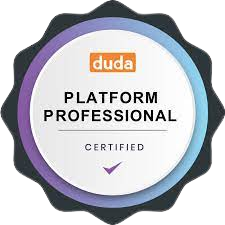How to Organize Website Pages for Your Business
Atticus Technologies • August 7, 2024

In the digital age, your website is often the first impression potential customers have of your business. Ensuring your website is well-organized can significantly enhance user experience, improve search engine rankings, and increase conversion rates. Here’s a guide to help you organize your website pages effectively.
1. Start with a Clear Plan
Before you start designing or restructuring your website, outline a clear plan. Identify the primary goal of your website – whether it’s to sell products, provide information, or generate leads. This will help you determine the most important pages and their hierarchy.
Key Steps:
- Define your target audience and their needs.
- Determine the core purpose of your website.
- List all the pages you need, including home, about, services/products, contact, blog, etc.
2. Establish a Logical Hierarchy
Organize your pages in a way that makes sense to your visitors. The most critical pages should be easily accessible from the homepage. Use a logical hierarchy to guide users through your content effortlessly.
Structure Tips:
- **Homepage:** This is the gateway to your site. It should provide an overview and link to the most important sections.
- **Main Navigation:** Include links to key sections like About, Services/Products, Blog, and Contact.
- **Subpages:** Break down complex information into subpages. For example, under Services, you might have individual pages for each specific service you offer.
3. Use Clear and Descriptive Titles
Each page title should clearly reflect the content of the page. This not only helps users navigate but also improves your search engine optimization (SEO).
Title Tips:
- Be specific and descriptive.
- Include relevant keywords for SEO.
- Keep it concise and to the point.
4. Optimize for User Experience
Ensure your website is user-friendly. This means having a clean design, intuitive navigation, and fast loading times. A well-organized site encourages visitors to stay longer and explore more.
User Experience Tips:
- **Navigation Menu:** Keep it simple and consistent across all pages.
- **Breadcrumbs:** Use breadcrumbs to help users keep track of their location on the site.
- **Call to Actions (CTAs):** Place CTAs strategically to guide users towards desired actions (e.g., “Contact Us,” “Learn More,” “Buy Now”).
5. Content Organization
Organize content in a way that is easy to read and digest. Use headings, subheadings, bullet points, and short paragraphs to break up text. Include images, videos, and other multimedia to make your content more engaging.
Content Tips:
- **Headings and Subheadings:** Use H1, H2, H3 tags appropriately to structure your content.
- **Bullet Points:** Highlight key points and make lists easy to scan.
- **Multimedia:** Use relevant images and videos to support your content.
6. Mobile Optimization
Ensure your website is optimized for mobile devices. With an increasing number of users accessing websites from smartphones and tablets, mobile optimization is crucial.
Mobile Tips:
- Use a responsive design that adjusts to different screen sizes.
- Ensure buttons and links are easily clickable on mobile.
- Keep load times fast by optimizing images and reducing heavy scripts.
7. Regular Updates and Maintenance
A well-organized website is not a one-time task. Regularly update your content, check for broken links, and keep your design fresh and relevant.
Maintenance Tips:
- **Content Updates:** Regularly add new blog posts, update product information, and refresh old content.
- **Link Checks:** Periodically check for and fix broken links.
- **Design Tweaks:** Update your design to keep it modern and user-friendly.
Conclusion
Organizing your website pages effectively is crucial for providing a seamless user experience and achieving your business goals. By following these steps, you can create a structured, user-friendly, and visually appealing website that meets the needs of your audience and drives business success. Remember, a well-organized website not only attracts visitors but also converts them into loyal customers.
SHARE

When it comes to creating a professional website for your business, the common perception is that it’s an expensive and time-consuming endeavor. Many business owners have been deterred by the hefty price tags that typically accompany web design and development services. With the average cost running into the thousands of dollars, it's easy to see why. However, at Atticus Technologies, we’re here to change the game. We believe that high-quality web design should be accessible to all businesses, no matter their size or budget. That’s why we offer our top-tier web development services at an incredibly affordable price—just $498. Breaking the Industry Norm In the traditional web design industry, it’s not uncommon to pay anywhere from $3,000 to $10,000—or even more—for a custom website. While these prices might be justified for large corporations with complex needs, they are often beyond reach for small businesses and startups. This is where Atticus Technologies steps in. We provide all the essential features of a professional website without the exorbitant costs. For just $498, you get a fully customized, professional website tailored to your business needs. We don’t believe that quality should come at a premium, and our goal is to help you establish a strong online presence without breaking the bank. Low Monthly Retainers with Full Access But the affordability doesn’t stop there. Once your website is up and running, we offer low monthly retainers starting at just $35/month. These retainers provide you with full access to your website, allowing you to edit, update, and customize it whenever you need. This means that as your business evolves, your website can too—without the need for costly redesigns or ongoing developer fees. Our user-friendly platform ensures that you have the power to make changes easily, whether it’s updating content, adding new products, or refreshing the design. And if you ever need a hand, our team is always here to support you. The Atticus Technologies Difference At Atticus Technologies, we’re committed to providing affordable, high-quality web design and development services that help small businesses grow. We understand that every dollar counts, and we’ve designed our services to maximize value without compromising on quality. With our low upfront costs and affordable monthly retainers, you can have a professional website that not only looks great but also drives results. Don’t let the high costs of web development hold your business back. Let Atticus Technologies help you create a website that elevates your brand and fits your budget. Ready to get started? Contact us today to learn more about our affordable web design solutions and see how we can help you build your business online!

In today’s digital landscape, having a strong online presence is essential for any business aiming to grow and succeed. One of the most important aspects of this presence is ensuring that your website is properly indexed by Google. If your site isn’t indexed, it simply won’t appear in search results, making it invisible to potential customers searching for your products or services. In this blog post, we’ll explore why Google indexing is so important for business growth and how it can significantly impact your online success. What Is Google Indexing? Before diving into the benefits, let’s clarify what Google indexing actually means. When Google “indexes” your website, it means that Google’s bots, also known as crawlers, have visited your site, analyzed its content, and stored the information in Google’s massive database. This allows Google to retrieve and display your website in search results when users enter relevant queries. In simple terms, if your site is not indexed, it won’t appear on Google. Visibility Equals Traffic The most obvious reason Google indexing is crucial for business growth is visibility. When your site is indexed, it has the opportunity to appear in Google’s search results, which are viewed by billions of users every day. The more visible your site is, the more traffic you can attract. And more traffic means more potential customers discovering your business. For example, if you run a local bakery and your website is properly indexed, it could appear in search results when someone nearby searches for “best bakery near me.” If your site isn’t indexed, you miss out on this valuable opportunity to reach a local audience. SEO and Search Rankings Google indexing is the first step in a larger process of optimizing your website for search engines, commonly known as SEO (Search Engine Optimization). SEO involves using various techniques to improve your website’s ranking in search results, making it more likely that users will click on your link. However, SEO efforts are pointless if your site isn’t indexed by Google. Without indexing, Google can’t rank your pages, no matter how well they’re optimized. Therefore, ensuring your site is indexed is the foundation upon which all other SEO strategies are built. Better rankings lead to higher visibility, which in turn leads to increased traffic and potential conversions. Building Credibility and Trust A website that consistently appears in Google search results tends to build credibility and trust with users. People are more likely to trust a business that appears at the top of search results because it’s often seen as an authority in its industry. Google indexing plays a key role in this, as it’s the mechanism that allows your website to gain this visibility and, by extension, credibility. Boosting Local SEO For businesses with a physical location, Google indexing is also crucial for local SEO. This involves optimizing your site to appear in search results for people searching within a specific geographic area. If your site is indexed and optimized for local SEO, it can appear in local searches and on Google Maps, helping you attract customers in your immediate vicinity. For instance, if your business is indexed and optimized, it might appear when someone nearby searches for “plumber near me,” driving local traffic to your site and increasing the likelihood of conversions. Staying Ahead of the Competition Finally, ensuring your website is indexed by Google can give you a competitive edge. If your competitors’ websites are indexed and yours isn’t, they’ll capture the online audience you’re missing out on. On the other hand, if your site is indexed and optimized for search, you have the potential to outshine competitors who may not have invested in proper indexing and SEO strategies. How to Ensure Your Site Is Indexed by Google To ensure your site is indexed, start by checking its current status in Google Search Console, a free tool that provides insights into how Google views your website. You can submit your sitemap directly to Google Search Console, which helps Google’s crawlers find and index your pages more efficiently. Additionally, regularly updating your content and ensuring that your website is free from technical issues can help maintain and improve your indexing status. Conclusion Google indexing is a fundamental aspect of online visibility, SEO, and ultimately, business growth. Without it, your website won’t appear in search results, making it nearly impossible for potential customers to find you. By ensuring that your site is properly indexed, you set the stage for higher traffic, better search rankings, increased credibility, and enhanced local SEO—all of which contribute to the growth and success of your business. If you’re looking to optimize your website and ensure it’s indexed by Google, Atticus Technologies offers affordable, quick-turnaround website solutions that are fully optimized for Google Search and Google My Business. Get your business noticed online and start growing today!

In today's digital age, having a strong online presence is crucial for business success. One of the most effective ways to achieve this is through a Google-optimized website. This optimization not only improves your visibility on the world's most popular search engine but also enhances your credibility and reach. At Atticus Technologies, we understand the importance of a Google-optimized website and offer affordable solutions with quick turnaround times to help your business thrive. Why Google Optimization Matters Increased Visibility: Google is the go-to search engine for millions of users daily. By optimizing your website for Google, you increase the chances of appearing in relevant search results, which can drive more traffic to your site. Enhanced Credibility: Websites that rank higher on Google are often perceived as more credible and trustworthy by users. A Google-optimized website can boost your business's reputation and attract more potential customers. Better User Experience: Google prioritizes websites that offer a great user experience. This includes fast loading times, mobile optimization, and easy navigation. By meeting these criteria, your website not only ranks higher but also provides a better experience for your visitors. Local SEO Advantage: With Google My Business optimization, your business can appear in local search results, maps, and business listings. This is particularly beneficial for attracting local customers who are looking for services in your area. How Atticus Technologies Can Help At Atticus Technologies, we specialize in creating affordable, high-quality websites that are fully optimized for Google search engines and Google My Business. Here’s how we can help your business: Affordable Solutions: We believe that every business, regardless of size, should have access to a professional and effective online presence. Our website packages are competitively priced to ensure you get the best value for your investment. Quick Turnaround Time: Time is of the essence when it comes to building your online presence. Our efficient processes and skilled team ensure that your website is up and running in no time, allowing you to start benefiting from increased visibility and traffic sooner. Comprehensive Google Optimization: Our websites are designed with Google’s best practices in mind. From keyword-rich content and metadata to fast loading speeds and mobile-friendly designs, we ensure your site meets all the criteria for high search engine rankings. Google My Business Integration: We help you set up and optimize your Google My Business profile, making it easier for local customers to find you. This includes accurate business information, customer reviews, and integration with Google Maps. Ongoing Support and Maintenance: Our commitment to your success doesn’t end with the launch of your website. We offer ongoing support and maintenance to keep your site updated and optimized as search engine algorithms evolve. Build Your Business Better with Atticus Technologies A Google-optimized website is a powerful tool for growing your business. By improving your online visibility, credibility, and user experience, you can attract more customers and drive sales. Atticus Technologies is here to help you achieve these goals with affordable, high-quality websites and a quick turnaround time. Don't miss out on the benefits of a Google-optimized website. Contact Atticus Technologies today to learn more about our services and how we can help your business succeed in the digital world.

In today's fast-paced digital world, having a mobile-optimized website is no longer a luxury—it's a necessity. With the proliferation of smartphones and tablets, more people than ever before are accessing the internet on the go. This shift in consumer behavior has significant implications for businesses of all sizes. Here’s why having a mobile-optimized website is crucial for your business: 1. Enhanced User Experience A mobile-optimized website ensures that your visitors have a seamless and enjoyable experience, regardless of the device they use. When users access a non-optimized site on their mobile devices, they often encounter issues like slow load times, difficult navigation, and unresponsive design elements. These frustrations can drive potential customers away. Conversely, a mobile-optimized website is designed to be responsive, adjusting to different screen sizes and orientations to provide an intuitive and user-friendly experience. 2. Increased Traffic Search engines like Google prioritize mobile-friendly websites in their search results. This means that if your website is optimized for mobile, it’s more likely to appear higher in search rankings, leading to increased visibility and traffic. With the majority of web traffic now coming from mobile devices, ignoring mobile optimization could result in missing out on a significant portion of potential visitors. 3. Higher Conversion Rates A positive user experience on mobile can directly translate to higher conversion rates. Whether your goal is to generate leads, sell products, or engage with your audience, a mobile-optimized website makes it easier for visitors to take action. Features like easy-to-click buttons, streamlined forms, and quick loading times can significantly boost your conversion rates by reducing barriers to engagement. 4. Competitive Advantage In a crowded digital marketplace, staying ahead of the competition is essential. A mobile-optimized website sets you apart from businesses that have yet to make this crucial update. It demonstrates that you are forward-thinking and committed to meeting your customers' needs. As more consumers expect a flawless mobile experience, businesses that fail to deliver will inevitably fall behind. 5. Improved Brand Perception First impressions matter. When users visit your website on a mobile device and find it well-optimized, they are more likely to have a positive perception of your brand. It shows that you value their time and are dedicated to providing a top-notch experience. On the other hand, a poorly designed mobile site can make your business appear outdated and unprofessional. 6. Better Local SEO For businesses that rely on local customers, mobile optimization is particularly important. Many people use their mobile devices to search for local businesses while on the move. Google’s algorithms take into account a site’s mobile-friendliness when displaying local search results. Therefore, having a mobile-optimized site can enhance your local SEO efforts, making it easier for nearby customers to find you. 7. Adaptation to Changing Consumer Behavior Consumer behavior continues to evolve, with an increasing number of transactions and interactions happening on mobile devices. By optimizing your website for mobile, you are aligning your business with these changes and ensuring you can meet your customers where they are. This adaptability is key to staying relevant in an ever-changing digital landscape. Conclusion Investing in a mobile-optimized website is not just about keeping up with trends—it's about future-proofing your business. The benefits of enhanced user experience, increased traffic, higher conversion rates, and improved brand perception make it a critical component of your digital strategy. Don’t let your business fall behind. Embrace mobile optimization and watch your business thrive in the mobile-first world. For more information on how to optimize your website for mobile devices or to get started with a mobile-friendly redesign, contact our team at Atticus Technologies today. Let's ensure your online presence is as dynamic and accessible as your business deserves!

In today's fast-paced digital world, your website is often the first point of contact between your business and potential customers. It serves as a digital storefront, and its design plays a critical role in attracting and retaining visitors. Over time, however, the effectiveness of your website can diminish, making a redesign essential. In this blog, we'll explore seven telltale signs that indicate your website might be in need of a re-design. 1. Outdated Design The digital landscape is ever-evolving, and design trends change quickly. If your website's design looks outdated compared to your competitors or modern web standards, it's time for a facelift. An outdated design can create a negative impression, suggesting that your business may not be keeping up with the times. 2. Poor User Experience User experience (UX) is paramount in today's online world. If visitors find it difficult to navigate your site, encounter broken links, or experience slow page load times, they're likely to leave in frustration. A website redesign can address these issues, improving usability and keeping visitors engaged. 3. Non-Responsive Design With the increasing use of mobile devices, a responsive design is crucial. If your website doesn't adapt seamlessly to various screen sizes, you risk losing a significant portion of your audience. A mobile-friendly website is not only user-friendly but also ranks better in search engine results. 4. Low Conversion Rates Your website's primary goal might be to convert visitors into customers or leads. If you notice a decline in conversion rates or find that users frequently abandon their shopping carts or contact forms, it's a clear indicator that something needs to change. A redesign can optimize your site for conversions, making it more effective at achieving your business objectives. 5. Branding Misalignment Your website should reflect your brand identity accurately. If your branding has evolved, but your website still showcases outdated logos, colors, or messaging, it can create confusion among your audience. Consistency in branding is key to building trust and credibility. 6. Slow Loading Times In an age of instant gratification, slow-loading websites can be a significant turnoff. If your website takes too long to load, visitors are likely to bounce off and seek faster alternatives. A website redesign can address issues such as large image files, excessive plugins, or inefficient code, speeding up your site's performance. 7. Ineffective Content Content is king, and it should be both relevant and engaging. If your website's content is outdated, lacks value, or fails to address your target audience's needs and pain points, it's time for a content overhaul. A well-planned redesign can also help reorganize content for better accessibility and readability. If you've recognized the need for a website redesign but aren't sure where to start, Atticus Technologies is here to help. Our experienced team of web designers and developers specializes in transforming outdated, ineffective websites into modern, high-performing online assets. With packages starting at just $498, we offer cost-effective solutions tailored to your business's unique needs. Our approach prioritizes user experience, responsive design, and SEO optimization to ensure your website not only looks great but also attracts more visitors and converts them into customers. At Atticus Technologies, we understand the importance of a compelling online presence, and we're committed to helping you take your business to the next level. Contact us today to discuss your website redesign project and start getting more business. In the digital age, your website is a crucial asset for your business. An outdated, poorly functioning, or non-user-friendly website can cost you customers and credibility. If you've noticed any of the signs mentioned above, it's a clear indication that a website redesign is in order. By investing in a fresh and functional design, you can not only improve user experience but also drive better results for your business. So, don't wait until it's too late – give your website the makeover it deserves and stay ahead in the online game.

In a world where smartphones have become an extension of ourselves, it's no surprise that mobile web design is taking over the web development industry. As we increasingly rely on our mobile devices to access information, shop, connect with friends, and more, businesses have had to adapt to cater to this mobile-centric world. One company at the forefront of this revolution is Atticus Technologies, a web development agency that prioritizes mobile user experience in all their website designs. The Mobile-First Shift The shift towards mobile web design is more than just a trend; it's a necessity. The statistics speak for themselves: a substantial portion of web traffic comes from mobile devices. Google recognized this shift and introduced mobile-first indexing in 2018, meaning it primarily uses the mobile version of a site's content for ranking and indexing. This change sent a clear message to the web development industry: mobile compatibility is no longer an option, but a fundamental requirement. Atticus Technologies: A Mobile-First Approach Atticus Technologies is an exemplar of how the web development industry is embracing mobile-first design. They understand that a responsive design, which adapts seamlessly to various screen sizes, is vital for ensuring a positive user experience. The company's commitment to mobile is evident in every website they build, regardless of the client's industry or niche. 1. User-Centric Design Atticus Technologies takes a user-centric approach to design. They understand that mobile users have different needs and behaviors compared to desktop users. Therefore, they prioritize user-friendly navigation, clean interfaces, and fast loading times for mobile devices. This approach ensures that visitors have a smooth and enjoyable experience, increasing the chances of conversion and customer retention. 2. Mobile-Optimized Content Creating mobile-optimized content is essential for retaining users' attention on smaller screens. Atticus Technologies ensures that all text, images, and multimedia elements are appropriately scaled and positioned for mobile users. They also implement mobile-friendly typography and ensure that content remains legible and engaging. 3. Performance Optimization Mobile users are notoriously impatient when it comes to slow-loading websites. Atticus Technologies recognizes the importance of performance optimization for mobile. They use techniques such as image compression, lazy loading, and efficient coding practices to guarantee fast loading times on mobile devices, regardless of the user's network speed. 4. Cross-Browser Compatibility Mobile web design doesn't mean neglecting other platforms. Atticus Technologies ensures that websites are compatible with various mobile browsers, including Safari, Chrome, and Firefox, to provide a consistent experience for all users. Atticus Technologies' Mobile-First Success Stories Atticus Technologies has an impressive track record of mobile-first success stories. They have worked with businesses across industries, from e-commerce to healthcare, and have consistently delivered websites that prioritize mobile users. This commitment to mobile user experience has translated into improved engagement, higher conversion rates, and satisfied clients. Conclusion Mobile web design is no longer an option; it's a requirement for success in today's digital landscape. Atticus Technologies stands as a shining example of how web development agencies are embracing this shift towards mobile-first design. Their dedication to creating user-centric, mobile-optimized websites ensures that their clients stay ahead of the competition and provide a superior online experience for all users. As the web development industry continues to evolve, companies like Atticus Technologies are leading the way in shaping the future of mobile web design.

In the fast-paced world of online marketing, success is often measured by the ability to capture a potential customer's attention and convert it into a sale. This is where landing pages play a pivotal role. Landing pages act as the digital doorway to your business, creating the first impression that can make or break a potential conversion. And what if we told you that you could have a powerful landing page solution starting at just $49/month with Atticus Technologies? Let's dive into how Atticus Technologies' landing pages can seamlessly integrate with your Google and Facebook ad campaigns, leading to higher conversions and more sales for your business. The Power of a Landing Page Before we delve into the benefits of Atticus Technologies' landing pages, let's first understand why landing pages are essential for any online marketing strategy. A landing page is a standalone web page specifically designed for a marketing or advertising campaign. Unlike your website's homepage, a landing page is laser-focused on a single objective – getting your visitors to take a specific action, such as signing up for a newsletter, downloading an eBook, or making a purchase. This focused approach ensures a higher chance of conversion because it eliminates distractions and guides visitors toward the desired action. Atticus Technologies' Affordable Landing Pages At Atticus Technologies, we understand the importance of having a compelling landing page for your marketing efforts. That's why we offer affordable landing page solutions starting at just $9/month. This budget-friendly option ensures that even small businesses and startups can harness the power of a dedicated landing page without breaking the bank. Integration with Google and Facebook Ads Now, let's get to the heart of the matter – how Atticus Technologies' landing pages seamlessly integrate with your Google and Facebook ad campaigns to boost conversions and sales. a. Google Ads Integration Google Ads is a powerful advertising platform that enables businesses to reach their target audience through search and display advertising. When you pair your Google Ads campaign with an Atticus Technologies landing page, you're setting the stage for success. Our landing pages are designed to align perfectly with your Google Ads messaging. Whether you're running search ads or display ads, our landing pages are customizable to match the keywords and ad copy you're using. This consistency in messaging improves user experience and ensures that visitors find exactly what they're looking for when they click on your ad. Additionally, Atticus Technologies' landing pages are optimized for mobile devices – a crucial factor in Google Ads success, as many users browse and shop on mobile. Mobile-optimized pages load quickly and display beautifully, reducing bounce rates and increasing the likelihood of conversions. b. Facebook Ads Integration Facebook's vast user base and detailed targeting options make it a goldmine for businesses looking to reach specific audiences. Integrating an Atticus Technologies landing page with your Facebook Ads campaign can help you unlock even more value. Our landing pages are designed to be visually engaging, capturing the attention of Facebook users as they scroll through their feed. With the ability to add videos, images, and compelling headlines, you can create a landing page that resonates with your target audience. Moreover, our landing pages are designed for easy integration with Facebook Pixel, allowing you to track user actions and gather valuable data. This data can be used to refine your ad targeting and optimize your campaign for better results. Free Landing Pages with Website Purchase As an added bonus, Atticus Technologies offers free landing pages with the purchase of any website package. This means you can not only have a stunning website but also a dedicated landing page to support your marketing efforts – all in one package. In the competitive landscape of online marketing, every advantage counts. Atticus Technologies' affordable landing pages, starting at just $9/month, are a game-changer for businesses looking to boost conversions and increase sales through Google and Facebook ad campaigns. Our seamless integration with these platforms ensures that your messaging is consistent and optimized for success. Plus, with our free landing page offer, you get even more value when you purchase a website package. Don't miss out on the opportunity to supercharge your online marketing efforts. Try Atticus Technologies' landing pages today and witness the transformation in your conversion rates and sales. Your digital success story starts here!

In today's digital age, a well-designed website is an essential tool for any business looking to thrive in the online marketplace. Effective web design not only enhances your online presence but also plays a critical role in attracting and retaining customers. Here's why it's crucial and how Atticus Technologies can help you achieve it: 1. First Impressions Matter Your website is often the first point of contact between your business and potential customers. Just like in face-to-face interactions, first impressions count. A visually appealing and user-friendly website design can instantly captivate visitors, making them more likely to explore your offerings and engage with your content. 2. User Experience (UX) Effective web design focuses on providing an exceptional user experience. A well-structured and intuitive website layout ensures that visitors can easily navigate your site, find the information they need, and complete desired actions, such as making a purchase or contacting your business. A positive user experience can lead to higher conversion rates and customer satisfaction. 3. Mobile Responsiveness With the increasing use of smartphones and tablets, it's vital that your website is mobile-responsive. A responsive design ensures that your site looks and functions well on various devices and screen sizes. This is not only essential for user convenience but also for search engine rankings, as Google prioritizes mobile-friendly websites in its search results. 4. Brand Identity Your website serves as a digital storefront for your brand. A consistent and visually appealing design reinforces your brand identity and helps build trust with your audience. A strong brand presence can set you apart from competitors and create a lasting impression on visitors. 5. SEO (Search Engine Optimization) Search engines like Google consider website design elements when ranking pages in search results. Properly structured and optimized websites are more likely to appear higher in search rankings. This increased visibility can drive organic traffic to your site, leading to more potential customers discovering your business. 6. Competitive Advantage In a crowded online marketplace, having a professionally designed website can give you a competitive edge. A visually appealing, user-friendly, and modern website can make your business stand out and attract customers who are looking for a trustworthy and reliable online presence. Atticus Technologies: Your Web Design Solution Atticus Technologies understands the importance of effective web design for your business's success. We offer two compelling options to meet your web design needs: Custom Web Design for $499 Our team of experienced designers will work closely with you to create a unique, tailored website that reflects your brand and meets your business objectives. We prioritize user experience, mobile responsiveness, and SEO best practices to ensure your website stands out and performs exceptionally well. Build-It-Yourself Website Creator for $49/month For those looking for a more hands-on approach, we offer a user-friendly website builder that empowers you to create your own professional website. Our intuitive platform provides templates, tools, and guidance to help you design and manage your online presence effectively. Investing in effective web design is an investment in the growth and success of your business. Whether you choose our custom web design service or our DIY website builder, Atticus Technologies is here to support you in creating a compelling online presence that drives results. Contact us today to get started on your journey to a more effective and impactful website.

In the fast-paced world of online advertising, every click counts. As businesses strive to make the most out of their marketing budgets, the role of landing pages has become increasingly vital. If you're using Google Ads to promote your products or services, you might have heard about the cost-effective and user-friendly landing page solutions offered by Atticus Technologies for just $49 per month. In this blog, we'll dive into the importance of landing pages for your paid advertising on Google and explore how Atticus Technologies can help you amplify your campaign's success. The Power of a First Impression Imagine clicking on an enticing ad that promises a solution to your problem, only to be directed to a cluttered and confusing website homepage. Chances are, you'd quickly hit the back button. This scenario underscores the significance of landing pages. A landing page is a standalone web page designed to deliver a focused and relevant message to visitors who clicked on your ad. It's your chance to make a strong first impression, aligning the content of your ad with the content of your landing page. Relevance Increases Conversion One of the primary reasons why landing pages are crucial for your Google Ads campaign is their ability to enhance relevance. When a user searches for a specific keyword and sees an ad that matches their query, they expect to find exactly what they're looking for when they click through. Sending them to a well-crafted landing page that directly addresses their needs increases the likelihood of conversion. Atticus Technologies' landing page solutions are tailored to cater to your target audience, ensuring a seamless transition from ad to landing page and boosting conversion rates. Focused Messaging and Call to Action Unlike a website homepage that showcases a variety of products, services, and information, a landing page is designed with a singular purpose in mind. Whether it's signing up for a newsletter, downloading an ebook, or making a purchase, the streamlined focus of a landing page ensures that your call to action (CTA) remains clear and compelling. Atticus Technologies understands the importance of a strong CTA and provides customizable templates that help guide users towards taking the desired action. Mobile Optimization Matters With the majority of internet users accessing content through their mobile devices, it's imperative that your landing pages are optimized for mobile browsing. Atticus Technologies' landing pages are designed to be responsive, ensuring a seamless experience across all devices. A user-friendly mobile landing page can significantly impact your campaign's success by reducing bounce rates and increasing engagement. Tracking and Analytics The beauty of digital marketing lies in its trackability. Atticus Technologies offers built-in analytics and tracking features that allow you to monitor the performance of your landing pages. By analyzing metrics such as click-through rates, conversion rates, and engagement behavior, you gain valuable insights into what's working and what can be improved. This data-driven approach enables you to refine your landing pages over time and achieve better results from your Google Ads investment. Affordability without Compromising Quality The cost of marketing tools can sometimes be a barrier, especially for small and medium-sized businesses. Atticus Technologies breaks down this barrier by offering landing page solutions at an incredibly reasonable price of just $49 per month. This affordability doesn't come at the expense of quality, as their templates are professionally designed to ensure aesthetics and functionality. In Conclusion As the digital landscape continues to evolve, landing pages remain a cornerstone of effective online advertising. If you're running Google Ads campaigns, investing in well-optimized landing pages is a strategy that can significantly impact your ROI. Atticus Technologies' $49 per month landing page solutions are a cost-effective way to create engaging and conversion-focused landing pages that align with your Google Ads efforts. Remember, your landing page is your virtual storefront – make it welcoming, relevant, and persuasive, and watch your Google Ads campaign flourish.






